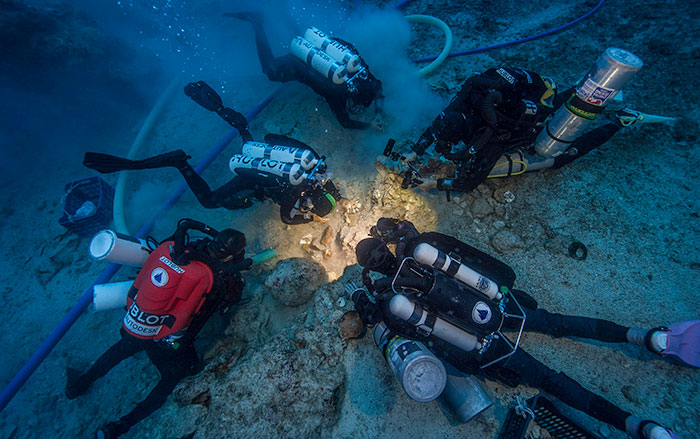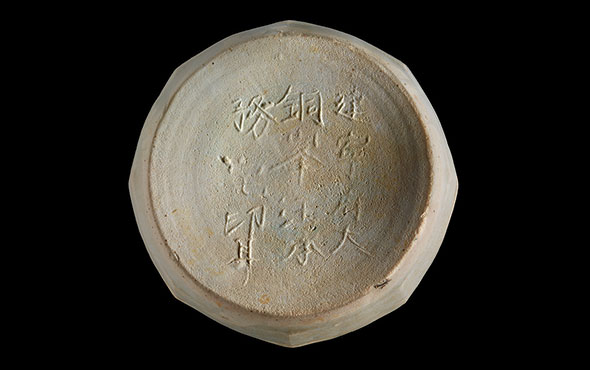ANTIKYTHERA, GREECE—Haaretz reports that a bronze object that may be an additional piece of the Antikythera Mechanism or a similar device was recovered from the site of a shipwreck in the Aegean Sea last year. The Anitkythera Mechanism, discovered by sponge divers in 1901, is a 2,200-year-old complicated system of cogwheels thought to have been used to calculate the movements of the sun, moon, and planets, and predict eclipses and equinoxes. An X-ray of the newly recovered bronze disc, which measures about three inches in diameter, has four metal arms, and holes for pins, shows that it bears an image of a bull. Scholars think the disc may have been a gear in the device that predicted the location of the zodiac constellation of Taurus. For more on the Antikythera shipwreck, go to “Bronze Beauty.”
Possible Piece of Antikythera Mechanism Identified
News November 13, 2018
Recommended Articles

Artifacts March 1, 2011
Lego Antikythera Mechanism
It took Andrew Carol 30 days to build a working model of the Antikythera Mechanism—the ancient Greek world's most sophisticated astrological instrument. The original device, dating to the second century b.c., consists of bronze gears. Carol used Legos.

Digs & Discoveries January/February 2018
Bronze Beauty

Letter from the Levant March/April 2025
On the Origin of the Pork Taboo
Exploring ancient people’s shifting beliefs about rearing and eating pigs

-
Features September/October 2018
Shipping Stone
A wreck off the Sicilian coast offers a rare look into the world of Byzantine commerce
 (Courtesy Marzamemi Maritime Heritage Project)
(Courtesy Marzamemi Maritime Heritage Project) -
Letter from Brooklyn September/October 2018
New York City's Dirtiest Beach
Long-lost clues to the lives of forgotten New Yorkers are emerging from the sands at Dead Horse Bay
 (Courtesy Jason Urbanus)
(Courtesy Jason Urbanus) -
Artifacts September/October 2018
Base of a Qingbai-Glazed Molded Box
 (© The Field Museum, cat. no. 344404. Photographer Gedi Jakovickas)
(© The Field Museum, cat. no. 344404. Photographer Gedi Jakovickas) -
Digs & Discoveries September/October 2018
Ice Age Necropolis
 (Archives of the Soprintendenza Archeologia Belle Arti e Paesaggio della Liguria - Italian Ministry of Cultural Heritage)
(Archives of the Soprintendenza Archeologia Belle Arti e Paesaggio della Liguria - Italian Ministry of Cultural Heritage)


